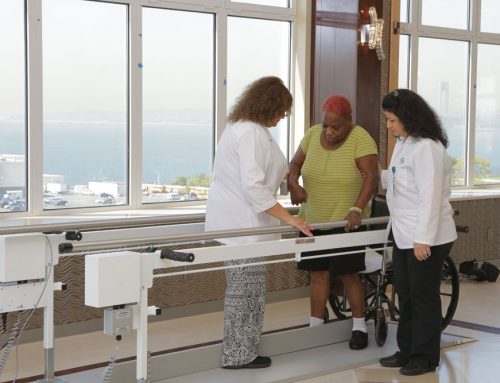Many of us know that acute care involves emergency and short-term intensive care. But fewer of us recognize the role subacute care plays in nursing services. If you or a loved one have been told that subacute care is needed, you might be wondering what’s involved.
In this post, we’re going to talk about subacute nursing services including what it is, who needs it, and the differences between acute and subacute care.
What is subacute nursing care?
You can think of subacute nursing as advanced care with a range of services. Subacute straddles the gap between acute care and minimal care. People in subacute care are not in a critical condition but still need ongoing support on a daily basis. Often, individuals arrive at care facilities that provide subacute nursing services after a surgery and a stay in hospital.

Some nursing homes and rehabilitation centers provide subacute nursing care services. One of them is Haym Salomon Home for Nursing & Rehabilitation – the only one in Brooklyn providing this care.
Who needs subacute nursing care?
Care in a subacute nursing setting is provided to people who face a range of conditions including but not limited to cancer, heart-related issues, debilitating injuries and illnesses, and much more.
These individuals no longer need acute hospital provided services but need more than basic support to regain health, wellness, and their previous level of independence.
What types of services are included in subacute nursing care?
The nurses who work in a subacute care setting are highly trained and have the ability to respond to medical emergencies should the need arrive. In addition, subacute nursing care often provides multidisciplinary services. Doctors and nurses work in conjunction with rehabilitation specialists including physical therapists and occupational therapists.
Medication schedules are closely monitored and any side-effects are noted and medications adjusted as needed. Pain management is a key aspect to subacute care. Other services of subacute care include IV therapy, oxygen therapies, cardiac monitoring and many more.
Subacute units and divisions in care facilities are also equipped with a wide range of specialist equipment and technology for better health monitoring. Dedicated staff make sure that patients are as comfortable as possible while they transition to a standard care setting.
Nurses also liaise with families to keep them updated on their loved one’s progress. They also make sure that the patient’s primary doctor is kept informed. Compassionate care is also important and nursing staff do their best to provide comfort and assistance.
Subacute care vs acute care
Acute care is reserved for medical emergencies and people who are in a critical condition or unstable health position. This can be because of an injury, an illness, or both.
In comparison, subacute nursing care services are provided to people who are no longer in a critical condition but who still need a higher level of care.
After subacute care, individuals generally transition to a regular care setting or an in-home care setting depending on their individual needs and the progress of their condition.
Advanced subacute nursing care services are provided here at Haym Salomon Home. Our specially trained staff has the skills and the know-how to help our patients who are no longer critical but require a higher level of daily care.
This content comprises informative and educational resources only and can not be considered as a substitute for professional health or medical guidance. Reliance on any information provided in this article is solely at your own risk. If you have any inquiries or apprehensions about your medical condition or health goals, talk with a licensed physician or healthcare provider.






Leave A Comment